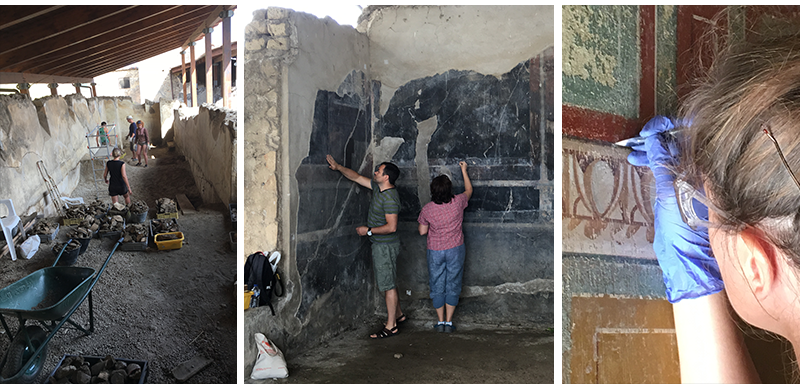News
Professor Thomas Howe to Present “Strolling with Power: Excavation and Publication of the Ancient Roman Garden of the Villa Arianna Stabiae” at Southwestern January 17
January 11, 2018
January 11, 2018
Open gallery

The Sarofim School of Fine Arts is pleased to present Professor Thomas Noble Howe as the honored speaker of January’s “Representations” Lecture Series at Southwestern on Wednesday, January 17, 2018, at 12:30-1:00 P.M., FAC 235. Howe, Professor of Art and Art History and chair of Art History, will present on his experience of ten years of excavation and study at the largest, best well-preserved Roman garden ever discovered.
Howe, who is the lead Excavation Director of the Garden of the Great Peristyle of the Villa Arianna in Stabiae, will discuss the significance of this enormous, excellently preserved garden. “It is the first actual archaeological evidence of the existence of the type of garden seen in the famous garden fresco of the Villa of the empress Livia at Prima Porta.” This painting was formerly thought to be a “fantasy” painting, but the discovery and careful excavation helped answer many questions and brought important details to life.
As Howe describes, “the work of hundreds of students and scholars has revealed in amazing detail how the Roman elite used these luxurious seaside villa gardens not just as places of relaxation, but also as a stage to control the social interactions of powerful people.” The extraordinary state of preservation of the garden surface allowed cash bush and tree roots and reconstruct the bushes, plants, grass pathways and planting beds, and even reconstruct the way the plants shaped spatial organization of the garden.
“What we have here is very likely the arrival of the professional landscape architect in Roman architecture,” Howe asserted, “the artful shaping of space and human movement with plants.”
Howe returns to Stabiae every summer, often bringing Southwestern architectural, classics, history, art and art history students with him. “It is such a wonderful, high impact learning experience for students. For them to have the opportunity to work on such a site in this historic garden… it’s truly life-changing.” At one point, Howe led field seasons of as many as 110 people from twelve institutions and seven countries. He has been directing the large project to create an “archaeological park” at the several villas at Stabiae near Pompeii since 1999. The project includes some six known villas, buried in the eruption Vesuvius in A.D. 79, of up to 22,000 sq m. He has also held the role of chief archaeologist and chief master planner for architecture and archaeology since 2000.

Howe, along with Kathryn Gleason, Michele Palmer and Ian Sutherland, published a book about the project: Excavation and Study of the Garden of the Great Peristyle of the Villa Arianna, Stabiae, 2007-2010, for Quaderni di Studi Pompeiani, VII, [Associazione Internazionale di Amici di Pompei/Editrice Longobardi, Castellammare di Pompei/Fondazione Restoring Ancient Stabiae, 2016 (2017)]. Howe and Gleason have since developed and published further theses on how this discovery clarifies exactly how elite inhabitants and guests used this garden and ambient architecture to move through spaces and interact in an intensely political environment.
Lecture Details
Location: Alma Thomas Fine Arts Center, Room 235
Date: Wed, January 17, 2018
Time: 12:30-1:00
Tickets: Free and open to the public
For more information about the upcoming lecture contact the Mathers Box Office, 512-863-1378. For additional information about Professor Howe’s publication or the Stabiae Excavation project, contact Dr. Howe directly at howet@southwestern.edu.














